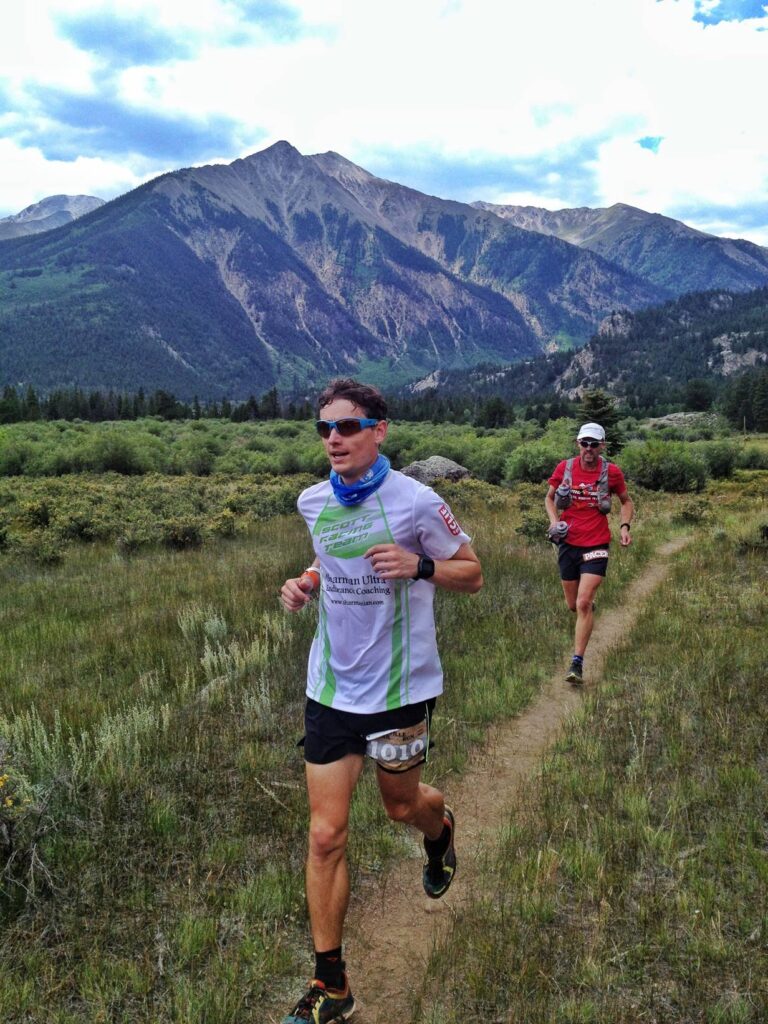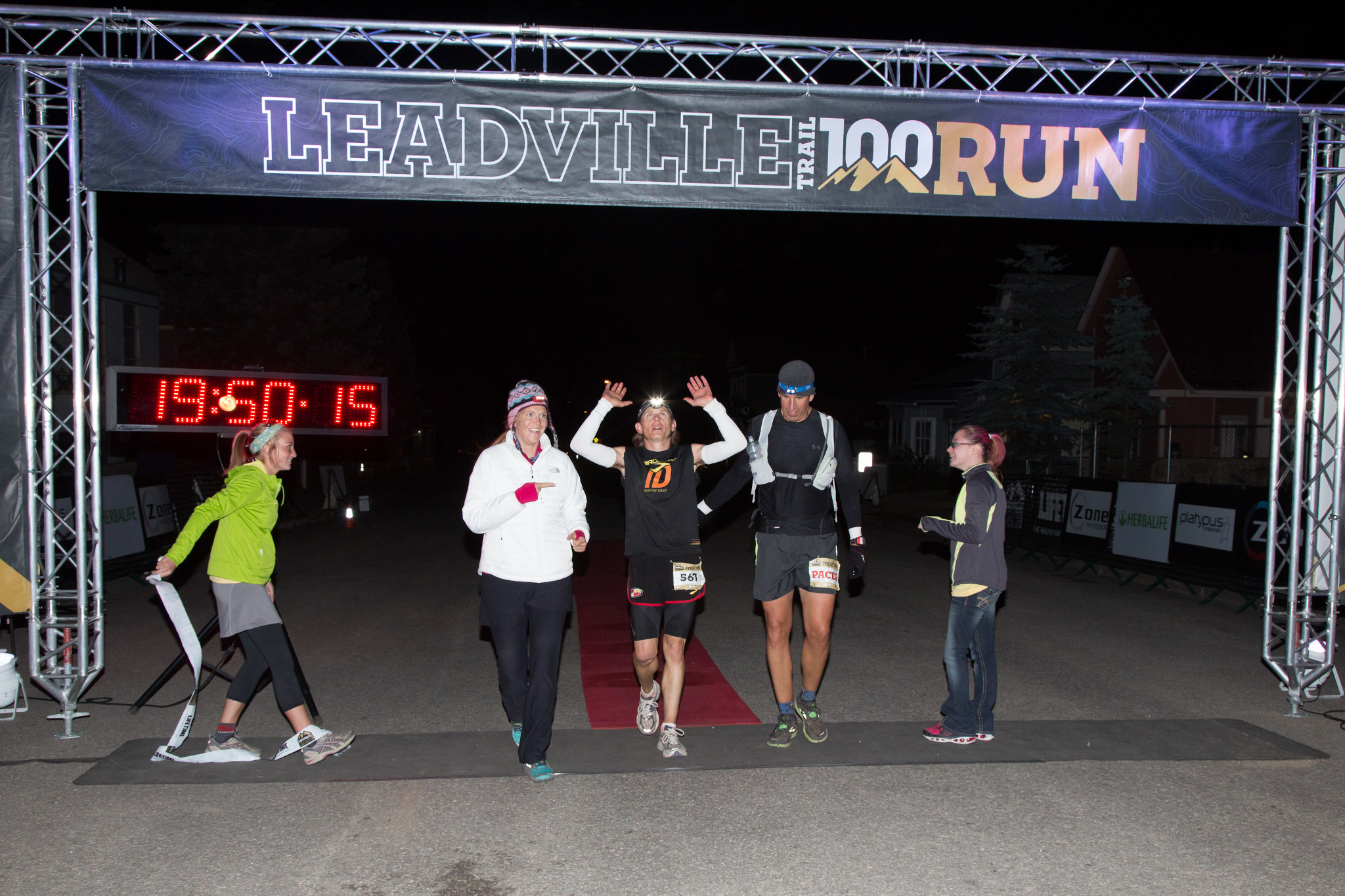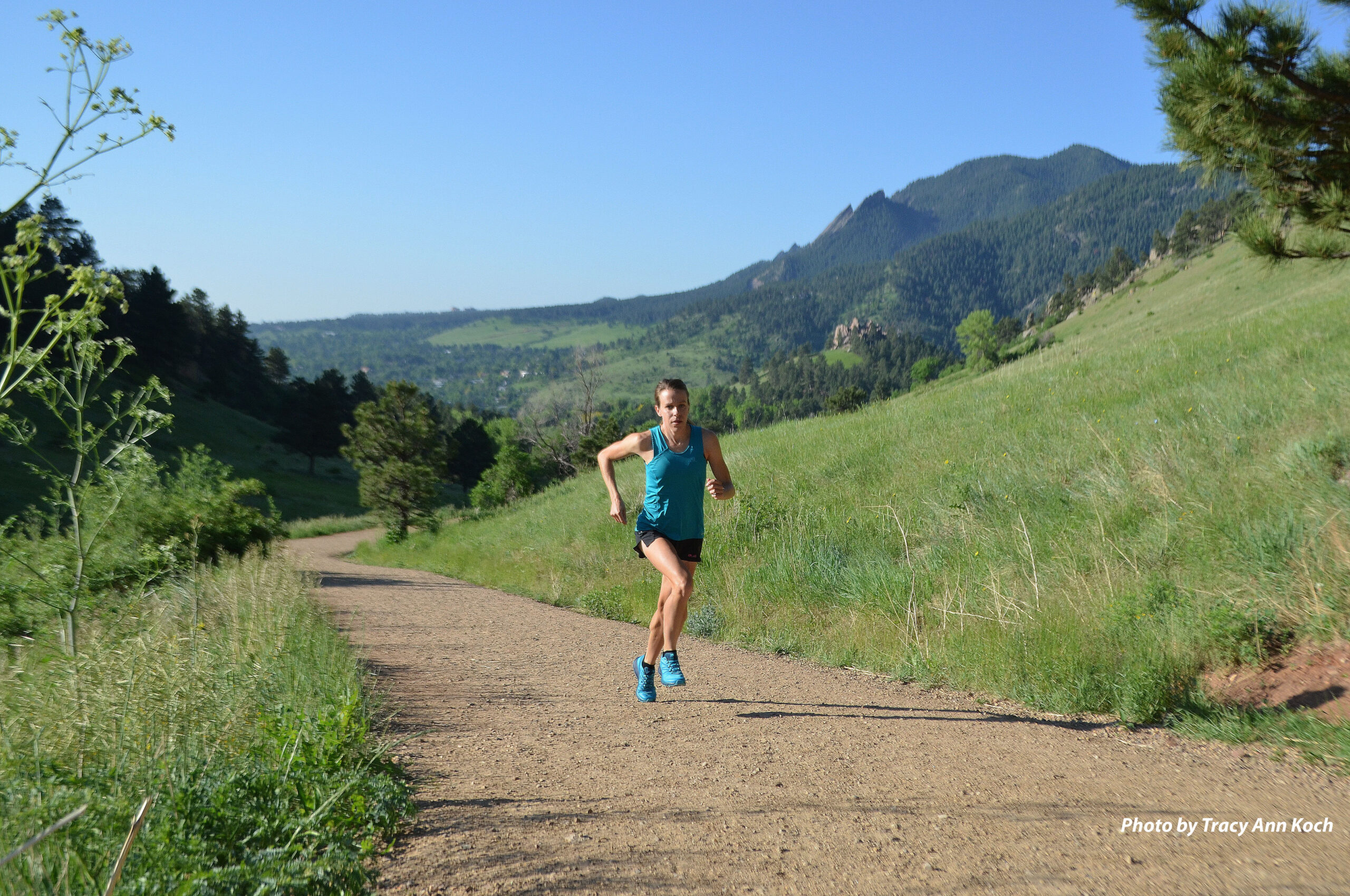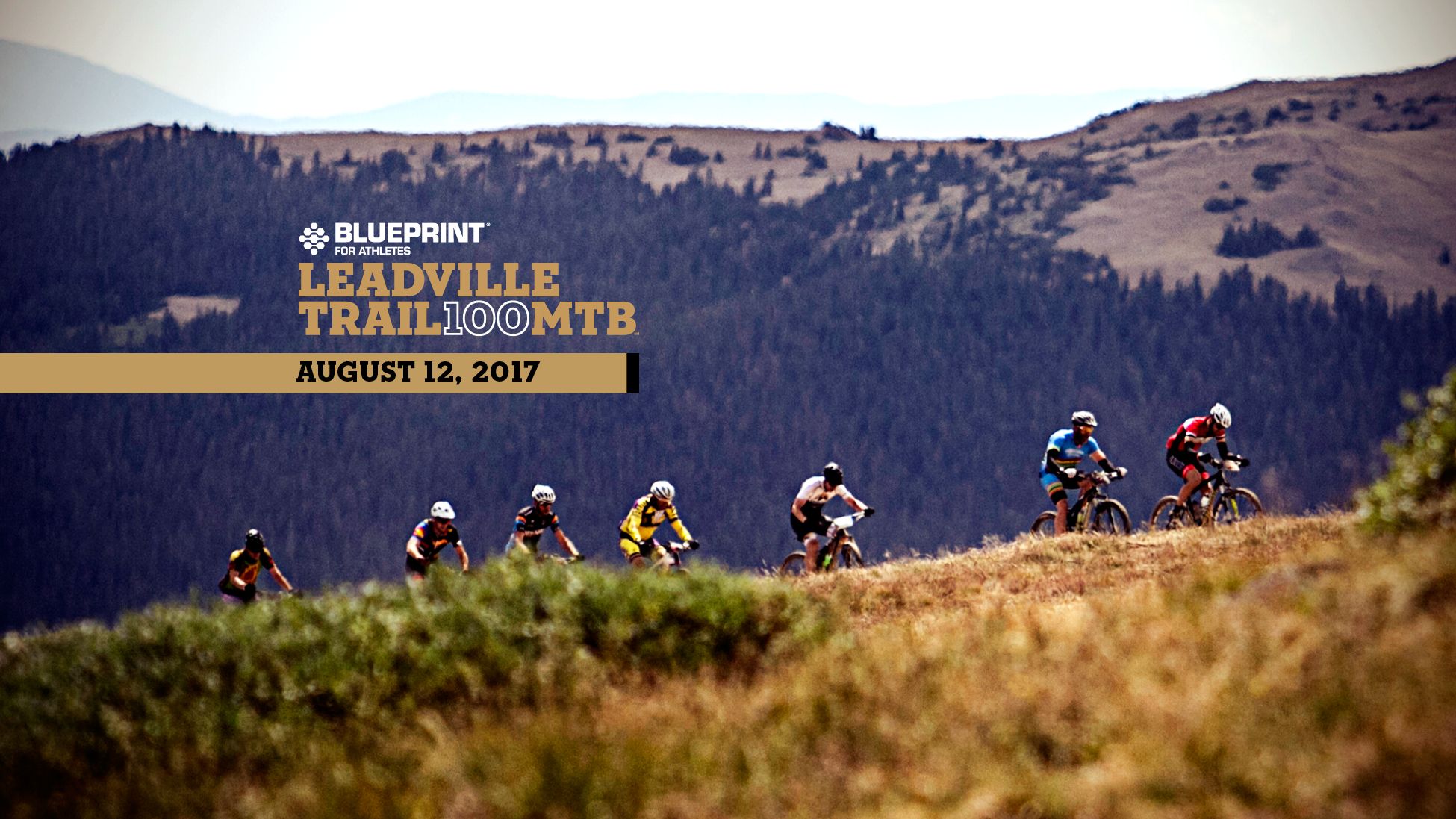Face of the Race: Ian Sharman

100+ miles in sub-16 hours. That’s Ian Sharman’s goal for this year’s Leadville Trail 100 Run. One of the world’s top ultrarunners, Ian Sharman holds a special place in his heart for this race. After winning in 2013, he came in third last year. He’s returning this summer hungry for another win – which he hopes to add to his more than 50 wins in multi-day and adventure races, road marathons and ultras. Ian is also a coach, so we caught up with him to learn his best tips for racing across the sky.
What is your favorite thing about the Leadville Trail 100 Run?
I like racing Leadville and it’s a great excuse to visit Colorado. It’s all about the experience for me, so when I’m in Colorado I’ll run other mountains beforehand and catch up with the friends I’ve made over the years. The Leadville Trail 100 is also special to me because it’s more than just a race. The whole town is behind it, as is the Leadville Trail 100 team, and that’s what makes it special. I’ve really enjoyed my experiences there and I’ll be back in 2015.
Also this year, two of my fellow coaches from Sharman Ultra Endurance Coaching – Ellie Greenwood and Liza Howard – are racing Leadville. They are certainly favorites in the women’s race, so that makes it even more exciting for me.
We heard you had a stress fracture at the end of 2014. Was it difficult to take time off from running?
I actually raced Leadville with the stress fracture this year. I took about two-and-a-half months off running after Leadville, which is a slightly longer rest than I usually take. If I thought about taking that much time off in advance it would have been difficult, but I had done a lot of 100-mile races in 2013 and 2014, so at the time it felt a little easier because it gave my body a chance to recover from all of that racing and rediscover the desire to race again.
You’ve finished Leadville twice in sub 17 hours – once for the win in 2013 and last year you finished third within minutes of second place, Mike Aish. What are your goals for Leadville this year?
I always want to be ambitious with my goals. I think it’s important to push yourself and I want to win Leadville again. Mike is a super-quick runner and an Olympian. I’m looking forward to racing him again at Leadville. Ideally, I’m looking to break 16 hours and the course record. It takes a special day to do this with the right weather conditions, but I believe I can do it.
You’re also a coach. What is your best advice for first timers training for an ultra?
My best advice for first-time ultra racers is to break the race into pieces and not to think about the entire distance. I don’t think that training for an ultra is a huge step up from training for a marathon. It’s very similar in a lot of ways. Just keep increasing your race distance slowly, like going from a marathon to 50-miler first. Don’t jump right into a 100-mile race immediately.
Before you became a full-time athlete, you worked at Deloitte in London, and also raced. What tips do you have for athletes balancing full-time work with training?
I work 50+ hours a week on a couple of different businesses currently, so fitting training in is always a challenge, just as it was when I had a desk job. One of the best times to fit runs in is before the work day gets going and before email, calls and unexpected tasks get in the way. However, I’m not a morning person so I made sure I ran as soon as I got home after work, plus I walked around five miles a day for my commute, which helps to keep a solid base of fitness as well as aiding with active recovery. It’s all about prioritization and discipline, plus making a routine where the training is the norm, not the exception.
On your blog you recommend to athletes to not only race, but to enjoy epic long runs. Do you have a favorite or a most memorable epic run?
I figure that if you do all of this training and racing, you may as well use the fitness you’ve gained for a fun experience. An epic long run is all about the location. One of my favorites is the Grand Canyon Rim to Rim run. It’s about 45 miles and you can just go and have fun, run at an easy pace and enjoy the scenery. This year, I’m looking to do some runs like that in the Oregon Cascades.
Training and racing definitely takes a toll on your body. How do you recover?
I think that rest and sleep are very important. I do a lot of walking and active recovery and I make sure to always listen to my body and don’t stick to a set schedule if my body needs a break. I think that the more races and experience you have year-over-year make it easier to listen to your body.
I’ve seen that you do a lot of power hiking in your races. Did you do that in Leadville?
I power hiked over the three steep climbs. I think that, like anything else, if you practice, you can hike more efficiently. If you are forced to walk, you are not as efficient. I think that power hiking gives your legs a break from all of the pounding of running because it uses your muscles in a different way and helps you be more efficient. It’s more sustainable for your body over the course of the race.
How much time do you spend training at elevation for Leadville, and what are your thoughts on using the Leadville Trail Marathon and Silver Rush 50 Run as training races?
I’ve always lived at lower altitudes, so I find there is no substitute for heading up to the mountains in advance of the race. Within about two to three weeks, the body gets the majority of the adaptations to altitude that can happen without extended months or years living up high, so I travel to higher locations, especially Leadville itself, for at least two weeks pre-race.
In addition, I try to race or visit locations at altitude a couple times earlier in the season so that I’m regularly up at altitude, more for the confidence this gives me than because it helps with the adaptations required for Leadville. For runners who have never raced at altitude, it helps to find out in advance what it’s like to run at the elevations found at the LT100 Run, so races like the Leadville Trail Marathon or Silver Rush 50 are great ways to find out how well a runner’s body deals with high elevations. We’re all different and that information can factor into the tactics for the main event.
I’m not convinced by the efficacy of altitude tents based on research I’ve read and from trying it myself.
What do you tell your athletes about pacing strategy for the Leadville Trail 100 Run?
The key is to keep things relaxed and relatively comfortable for as long as possible. Since the hardest two climbs are the trips over Hope Pass either side of the halfway mark, it’s essential to save enough energy to get through these and avoid trashing the quads on those long descents. After the second pass, you’ll get to the Twin Lakes aid station on the way back, and there are still 40 miles left, so it’s important not to be burned out by this point.
What’s your nutrition like when you race or your favorite thing to eat on the course?
I use CLIF Bar products, the Energy Gels, Shot Bloks and new Organic Energy Food pouches. I think they taste good and they are made with more organic ingredients than some of the other products on the market. I also graze at the aid stations. I can’t have one plan and stick to it, though. I need to be flexible because if something goes wrong and I’m not feeling well, I change my strategy to what my body needs.
How do you stay focused for such a long race? Do you ever have negative thoughts when you’re racing?
There are multiple ways I stay focused. From concentrating on how I’m feeling to focusing on where my competition is in the race. I always stick to my pacing plan but at Leadville in 2014, Mike and I were passing each other back and forth for a good portion of the race. Although it’s stressful, it made the race go by quickly because I was wondering where he was and if I was gaining on him or him on me, etc.
In regards to negative thoughts, it’s good to turn a negative into a positive. If you think about how much your legs hurt or how far you have to go, you can change that around to say, “I’m tired but I’m running well.” I also focus on the scenery or the weather. It’s easy to have negative thoughts, but you’ve got to break that as quickly as you can.
How do you select a pacer and crew for Leadville? Do they stay with you throughout your season?
For Leadville, I use local folks and friends in Colorado. I don’t always have the same pacers but this year I am pacing a friend at the Hard Rock 100 and he’s pacing me at Leadville. It’s fun to reciprocate and help each other out for different races.
How do you deal with the cold and wet portions of course?
The two times I’ve raced Leadville, the weather has been pretty nice. Although I was prepared for the cold, I did have my pacer carry my jacket up Hope Pass on the way back. For the water crossings I just run through them. Water crossings are part of the race and I know my feet will get wet and that they’ll be dry later.
What’s your favorite part of the Leadville course?
Hope Pass. Especially going down more than up!
To learn more about Ian Sharman and his Coaching, visit www.sharmanultra.com.



